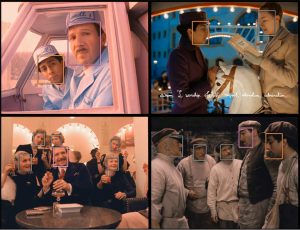Understanding the Neural Basis of High-Level Cognitive Functions

Humans excel at performing complex cognitive tasks (e.g., face recognition, social perception), and uncovering the neural underpinnings of these high-level functions is key to understanding the functional principles of the human brain, the nature of human intelligence, and improving real-world applications. In this research domain, I leverage neuroimaging data and computational algorithms (e.g., hyperalignment) to achieve precise mapping of individualized functional brain topographies using naturalistic stimuli such as feature movies (Jiahui et al., NeuroImage, 2020; eLife, 2023). Moreover, I utilize computational modeling techniques, such as machine learning, to explore the functions and organizational patterns of these brain regions. Additionally, I incorporate human behavioral and psychological measurements to examine how these neural foundations contribute to the variety of human behavioral outcomes.
Representations of Real-World Stimuli

Dynamic features (e.g., expressions) play an important role in real-world face and social representations. For instance, real-world faces convey information through both static (e.g., identity) and dynamic (e.g., expression, head orientation) features, and neural responses to dynamic face perception differ from those to static image-based perception. Previous results indicate that human biological representations of dynamic, naturalistic faces are different from those of state-of-the-art artificial neural networks (ANNs) (Jiahui et al., PNAS, 2023). Besides dynamic features, social cues (e.g., trustworthiness, dominance, attractiveness) and other cognitive processes such as memory and attention, affect real-world representations interactively. In this line of research, I combine ANNs, neuroimaging, behavioral experiments, and computational modeling to uncover the neural and behavioral representations of real-world scenarios with naturalistic stimuli and contribute to the development of future artificial intelligence (AI).
Modeling Neuropsychological and Clinical Populations

Research involving neuropsychological and clinical populations provides critical insights into unique brain dysfunctions, enabling us to draw causal inferences about underlying mechanisms. For instance, studies on individuals with prosopagnosia, who struggle with face recognition, have advanced our understanding of the human face processing system (Jiahui et al., PNAS, 2018; Neuropsychologia, 2017). By implementing computational modeling algorithms and integrating neuroimaging and neuropsychological assessments, this line of research aims to uncover the specific functional-anatomical correspondences and investigate how neural activities shape behaviors. Furthermore, these studies are crucial for identifying key differences between neurotypical individuals and those from neuropsychological or clinical populations, and pinpointing neural and behavioral features that are clinically meaningful. Recognizing people with those features will help with early diagnosis and individualized treatment plans.
Shared Neural Representations Across A Broad Spectrum of Ages and Species

A comprehensive investigation of neural representations in real-world situations across ages and species will contribute to the understanding of brain development and its origin and will also provide a basis for the development of high-quality educational and health programs in the future. In this research area, the primary focus is on identifying key features that could capture the anatomical and functional changes in the brain during development and understand the way they are characterized in real-life situations between human and macaque brains. By deriving and optimizing computational models, using neuroimaging and psychometric testing techniques, and combining ANNs, I will examine how human brain functions and organizations change across ages and species to advance our knowledge of brain homology and qualitative brain development across ages and since the split between macaques and humans.